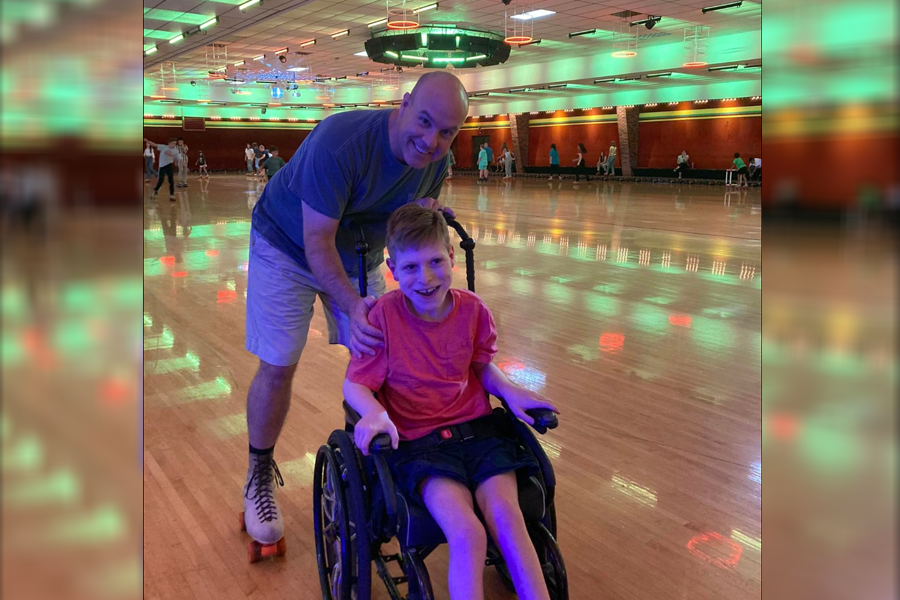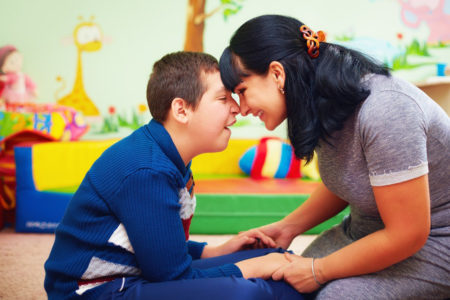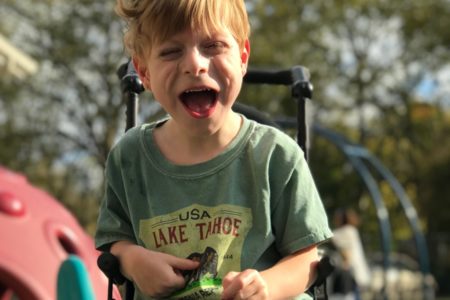For the first 14 months of my son’s life, he had a tracheotomy. That little hole in his throat taught us a great deal about the many ways humans communicate, including all the workarounds. Because the trach bypassed his vocal cords, we weren’t traveling that path of first sounds and words like we thought we would be. Charlie couldn’t even cry beyond a wheezy whistle of air. But that didn’t mean he couldn’t tell me exactly how he felt when his favorite blanket was in wash or the dog ate the Cheerios off his tray. Charlie learned earlier than most that there is a myriad of ways to express your wants and needs without words.
But we assumed, when Charlie finally grew strong enough to breathe without the trach, that the words would come. When I performed the very last trach removal with nurses and doctors standing witness, we all cheered as he let out a giant wail. It was a wail that promised “ma-ma” and “da-da” and a future of phrases that rolled into sentences that solidified into complex and fulfilling conversations. We were more than ready.
Yet, the words didn’t come. We still aren’t sure why. We hired a speech therapist. We did our Sherlock Holmes due diligence and investigated as best we could. But Charlie is his own kid. For whatever reason, he cannot talk, even though all that knowledge and desire is there.
In those early post-trach days, we created new workarounds—sign language and flashcards and when he felt sick, we relied on the good old standby: “point to where it hurts.” I was just so grateful we had that. It might not be language in the ordinary sense, but it was enough for us.
Flashforward to now. Charlie is six and in a public school for the first time. There’s a lot that goes on in a seven-hour school day. I can’t simply ask, “How was your day?” but I can make an educated guess based on feedback from his special education teacher. I know how much lunch he ate, if he filled out his worksheet during math, if he needed to take a break in the Special Ed room or cried when it was too hot or too cold on the playground. Again, we have our workarounds.
However, there are things going on now that he is older that have nothing to do with eating or sleeping or a sickness of the body. Our trick of “pointing to where it hurts” doesn’t always work anymore. He’s a kid now, with kid problems, and as his mom, I can tell when he comes home a little off. It’s that mom intuition. Unfortunately, intuition, by definition, is a hunch at best. It only tells me there is a problem, but not what that problem is.
Because you can’t point to “lonely” or “sad” or “discouraged, ” we are in the process of re-defining our language boundaries once again. I want him to be able to tell me if he feels ignored by the other kids on the bus, frustrated because he can’t make his fingers hold the pencil or nervous about how he’ll play soccer in gym class in his wheelchair. These are the emotions hardest to explain. How many adults can adequately find the words for “I’m scared” or “I need help” or “I want to be loved”? It’s not easy for even the most capable and articulate. Absolute truth? It’s not easy for me either.
So, Charlie and I are exploring this new territory together. We haven’t figured it out yet, but we will. And he is teaching me, as he always does, to consider my own words and thoughts more carefully. I want to be someone who can explain my own hurts, too.

Jamie Sumner is a special needs mom, author and blogger.
Discover her new book, Unbound: Finding Freedom from Unrealistic Expectations of Motherhood.
Read her blog, The Mom Gene.
Follow her on Facebook.
You can find more information about children with disabilities below:
- Why Parents Love Sign Language for Kids with Special Needs
- Six Ways to Reduce Stress in Your Child with Special Needs
- My Child with Special Needs is Neither Better Nor Worse and That’s OK
- Wisdom from a Kindergarten Mom as You Prepare for School
- Special Needs Parenting: What is A Social Story and How Can I Get One?




























